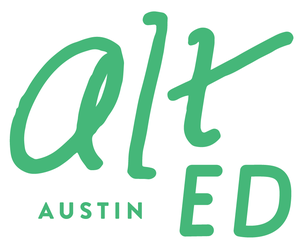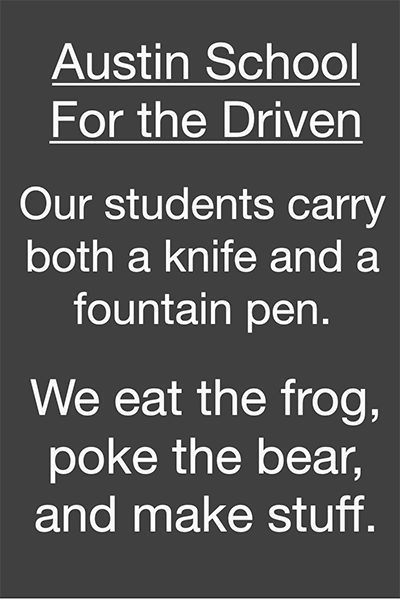Media Monday: Summer camps where young cinephiles can shine
/Whether we love it, hate it, or just dread the crowds, we all know that the creative explosion of SXSW is a defining event in Austin. In the lead-up to the 2017 marathon of events, I thought I’d look atwhat kids who are inspired by the film, music, and comedy festivals can do to take the leap and become active creatives themselves. After the professionals take down their screens, unplug their amps, and fold up their boxes of props, where can your kid go to learn more?
First up: Possibilities for young filmmakers in Austin. All these programs are currently open for registration for the summer.
- Your go-to site for information about Summer Camps for aspiring filmmakers is Summer @Austin Public. This organization is run by the Austin Film Society and allows kids to work with local filmmakers on live-action and animated projects, as well as TV shows. Camp themes include comedy, action-adventure, special effects, sci-fi/fantasy, and more. The kids don’t have to have any prior experience and don’t have to bring their own equipment—it’s all provided.
- UT Film and Media Youth Camps are offered during spring break and during the summer by the university’s Department of Radio-Television-Film. They take place right on campus. Animation and claymation, screenwriting, and documentary filmmaking are some of the topics on offer this year. HURRY! Discounts for summer end March 3!
- Austin School of Film has two-week Youth Summer Film Camps in June, when students ages 9 to 12 and 13 to 18 get a chance to learn a variety of techniques. Kids produce their own projects and screen the final product at the end.
If you know of more programs for young screenwriters, directors, costumers, or other cinemaniacs, please let us know in the comments and we’ll add to the list!
And if your son or daughter is interested in filmmaking, consider attending the screening of the Youth Animation & M.A.F.I.A. films on March 14, 2017 from 10:30 a.m. to 12:30 p.m. You'll see films created by kids ranging from 8 to 18 years old, and all made in under 24 hours.
Next week we’ll look at music camps, and as the festival begins, we’ll explore the world of comedy and improv for kids who want to take the stage.
Shelley Sperry



















